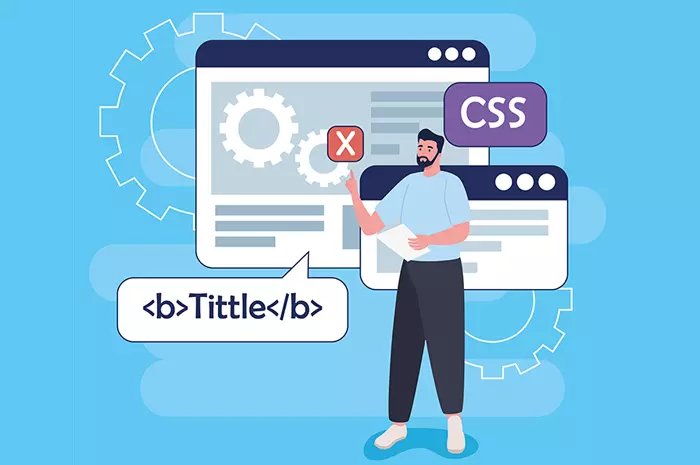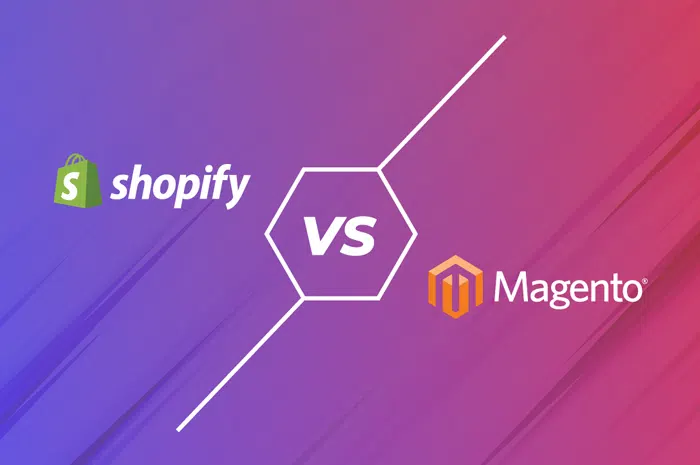A web developer working on coding for website development by Christina Morillo
CSS became the most popular web development language in recent years. However, since the release of SASS, CSS' use has declined dramatically.
But what makes SASS unique in comparison to CSS? Why did we need SCSS if CSS met all the requirements for web developers and web development? Continue reading to see why this is the case!
CSS vs SCSS: Understanding the Two Components
Before we deep dive into the differences between CSS vs SCSS, we study the two components in detail, understanding their evolutionary prominence and how they benefit the developers in web creation.
CSS
According to Statista, the most popular programming languages used by software developers worldwide as of 2022 were JavaScript and HTML/CSS, with more than 65 percent of respondents saying they used JavaScript and slightly over 55 percent saying they used HTML/CSS.
The scripting language is referred to as the Cascading Style Sheets. CSS is used to create web pages. CSS, along with HTML and JavaScript, is the most significant web technology. CSS has the file extension.css.
It was on 10 October 1994 that Hkon Wium Lie proposed the CSS and the first ever W3C CSS Recommendation (CSS1) was released in 1996.
-
By using CSS, the developers are able to separate the presentation from the content. These elements include possible font, colors, and layout.
-
The separation of information and presentation may increase content usability while also providing more control over presentation specifications.
-
It enables several web pages to share formatting by providing the corresponding CSS in a separate.css file and eliminating structural complexity and repetition.
SCSS
SCSS is an abbreviation for Sassy Cascading Style Sheets. SCSS is a more sophisticated and advanced CSS alternative.
Hampton Catlin was the architect, and Chris Eppstein and Natalie Weizenbaum were the designers of SCSS.
-
Because of its extensive and sophisticated features, it is also known as Sassy CSS. It is a pre-processor language that is interrupted or combined with CSS. The file's extension is SCSS.
-
Using SCSS, we can extend CSS with a number of new capabilities, such as variables, nesting, and many more. Writing SCSS may be significantly easier and quicker than writing the original CSS as a result of all these additional capabilities.
-
The CSS code and function may be used via SCSS. The CSS syntax is fully supported by SCSS, which also supports the full capabilities of SASS.
Before we investigate the difference between CSS and SCSS, let’s look at the advantages and downsides of both these components.
Differences Between SCSS and CSS
-
SCSS is a wonderful option for developers to utilize because it has all the functionality of CSS and many more features that CSS does not have.
-
SCSS has a ton of sophisticated and advanced features.
-
SCSS use vs import is one of the significant differences. You may import your own SCSS files with SASS's @import functionality.
-
Variables are available in SCSS, allowing you to make your code shorter. It has several benefits over traditional CSS.
-
Knowing SCSS makes it easier to modify Bootstrap 4.
-
A style language called CSS is used to design and construct web pages. Although SCSS is a specific kind of file for SASS, it utilized the Ruby programming language, which assembles the CSS style sheets for the browser.
-
Last but not least, the fact that SASS is thoroughly documented makes it a wise choice.
Advantages and Disadvantages of CSS
Advantages
-
Web designers can create other pages using the uniform framework that CSS helps to create. The web designer's productivity as a result also increases.
-
Typically, a website's source code spans two pages or more. However, CSS prevents it from becoming the code, leaving the website database clear and preventing any loading issues.
-
CSS facilitates the website's SEO. It is simpler for the search engine to locate the website in the search results when CSS is included in the web pages.
-
The file transfer's size is reduced, and it ensures that the file transfer happens quite quickly.
-
The development of websites is facilitated by CSS, which is fairly simple to understand. Since all the codes are on one page, editing or improving them won't need turning to other pages.
-
Numerous browsers accept CSS. It is consistent across all internet web browsers.
Disadvantages
-
Since CSS is based on open text, it lacks an internal security framework that prevents it from being overwritten. By accessing its read and write operations, anybody may change the CSS file and change the links.
-
CSS may become difficult when used with third-party programs like Microsoft FrontPage.
-
With CSS, we may only be able to use one web browser and not be able to use other web browsers. Thus, before setting up a website, web developers must confirm compatibility by testing the program via a number of browsers.
-
Initial CSS updates are easy to implement on a website from the developer's perspective. Even when changes have been performed, the user must validate compatibility if the CSS has the same altering effects across all browsers. Because CSS behaves differently in different browsers, it is straightforward.
-
In contrast to HTML or JavaScript, CSS has a number of versions, including CSS1, CSS2, and CSS3.
Pros and Cons of SCSS
Pros
-
It aids users in producing neat, speedy, and minimal CSS code inside a program's framework.
-
It has fewer codes, allowing us to create CSS more quickly.
-
In order to employ the nested syntax and practical functions, such as color manipulation, math functions, and many more functions, SCSS provides nested.
-
It includes variables that allow for the same level of value reuse as CSS.
-
It is fully compatible with any CSS version. We may thus utilize any CSS library that is available.
-
Although SASS has a variety of feedback options, any competent developer would choose SCSS's inline documentation.
Cons
-
Despite the popularity of pre-processors, CSS still has a knowledge gap.
-
When trying to debug the code, pre-processors have a compilation stage that renders the CSS code lines worthless. However, it has a significant drawback in that debugging is twice as difficult as programming.
-
The advantages of the browser's built-in element inspector may be lost while using SASS.
-
Even though the source files can be small, the finished CSS may be enormous.
Now that there is more clarity on what benefits and drawbacks both SCSS and CSS offer we will deep dive into the differences. Let’s explore SCSS vs CSS.
Conclusion
As you can see, when we go deeper into CSS vs SCSS, SCSS is a wonderful option for developers to utilize because it has all the functionality of CSS and more than what CSS does not have. However, depending on your website requirements, CSS might just be a better choice for you.
Therefore, it would be enormously beneficial if you didn't undervalue the advantages of using both CSS and SCSS. Talk to our experts to know more about CSS vs SCSS.
Website development involves organized planning, teamwork, and meticulous execution and for this hiring a web developer is key. If you are looking to build a top-notch website, BluEnt’s website development services and expertise are at par with the global standards.
If you require a complete web solution, we are just a click away.
Ready to boost your business by building a magnificent website? Contact us now!



 Proven Magento SEO Tips to Rank High on Search Engines
Proven Magento SEO Tips to Rank High on Search Engines  10 Best Magento Extensions to Achieve eCommerce Excellence.
10 Best Magento Extensions to Achieve eCommerce Excellence.  Magento vs Shopify: The Battle of the eCommerce Titans
Magento vs Shopify: The Battle of the eCommerce Titans  Unlock the power of ChatGPT for business data analytics!
Unlock the power of ChatGPT for business data analytics! 